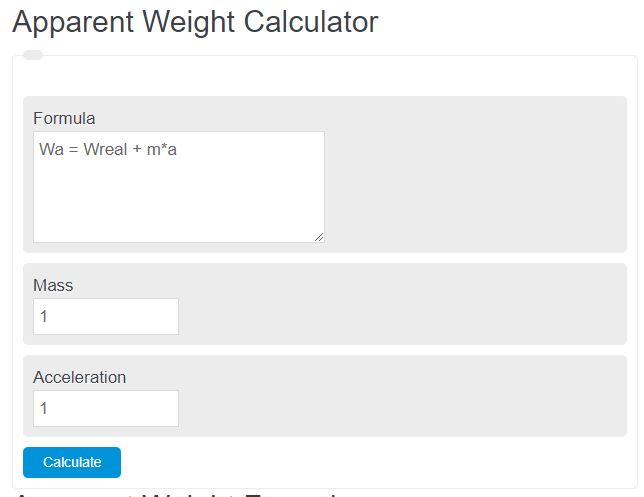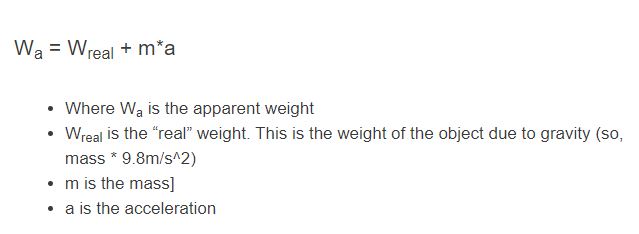Enter the mass and current acceleration of an object into the calculator to determine the apparent weight.
- Mass to Weight Calculator
- Power-to-Weight Ratio Calculator
- Mass Percent Calculator
- Apparent Angle Calculator
Apparent Weight Formula
The following formula can be used to calculate the apparent weight of an object.
Wa = Wreal + m*a
- Where Wa is the apparent weight
- Wreal is the “real” weight. This is the weight of the object due to gravity (so, mass * 9.8m/s^2)
- m is the mass]
- a is the acceleration
To calculate an apparent weight, multiply the mass times the acceleration, then add this value to the real weight.
It’s important to keep in mind that the direction of these forces matters. If the direction of the acceleration is opposite of gravity, the apparent weight is the sum of these values. If the acceleration is in the same direction, the apparent weight is the difference between these values.
Apparent Weight Definition
An apparent weight is an equivalent amount of weight you feel due to gravity and outside forces.
Apparent Weight Example
Let’s take the example from above. You happen to weigh 100 Newtons and a mass of 10.204 kg. You are in an elevator moving up at 1m/s^2. The apparent weight would be 100 + 10.204*1 = 110.204 N.
FAQ
An apparent weight is an equivalent weight that you feel due to the force of gravity as well as outside forces that cause acceleration. For example, in an elevator moving up, the apparent weight would be your normal weight plus the force felt due to the elevator moving up.

